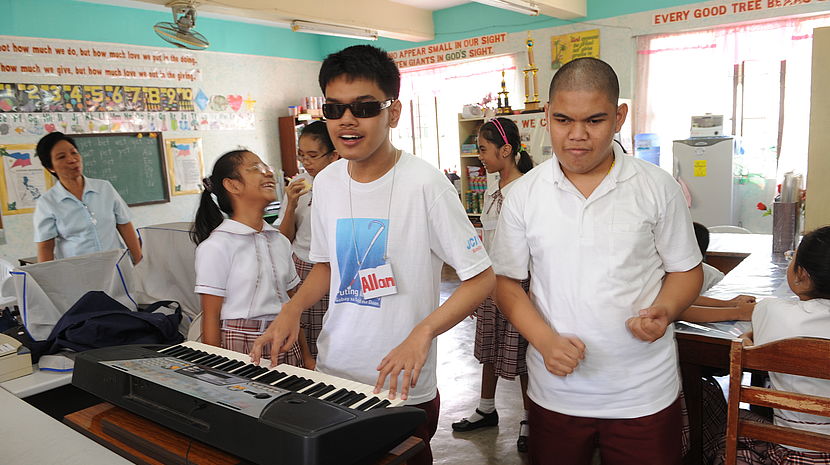Interview with our accessibility officer in the Philippines

Can you describe your work as an accessibility expert in Philippines? What are your main responsibilities?
I commenced as an accessibility officer in CBM Philippines last October 2014. I am working with the CBM Emergency Response Team here which was set up November 2013 after Typhoon Haiyan hit the Philippines. My background is occupational therapy and I have been sensitised very early in my career to the importance of accessibility, not only for persons with disabilities but for the population in general. In the course of my work with CBM, my team and I have the opportunity to contribute to the inclusive reconstruction process in the Philippines and promote accessibility and universal design principles.
My work as accessibility officer in the Philippines is focusing on three main areas that include:
- provision of technical support to CBM local partner
- conducting awareness raising and advocacy initiatives
- building capacity of CBM local partners, Disabled People’s Organisations (DPOs) and other professionals such as teachers, principals, policy makers, architects and engineers on universal design
For instance, I provide technical advice and supervision to our partner project team involved in the construction of accessible shelters in north of Cebu. I conduct regular site monitoring visits, carrying access audits where necessary and encouraging significant consultation and active participation of target beneficiaries as well as seeking their feedback on accessibility once the re/construction work commences and ends. My responsibility is not only to ensure implementation of accessibility and universal design principles but also to ensure transfer knowledge and expertise in the area of accessibility and document best practices.
Aside from direct support to CBM partners, I participate in awareness raising and advocacy initiatives. As part of the core technical team in advocating accessibility, and under the leadership of Ageing and Disability Task Force (ADTF) we organise, conduct trainings and awareness sessions for stakeholders like NGO & local government units. Together with other agencies (INGOs, NGOs and local government unit), we also developed a supplementary manual for Community Based Rehabilitation (CBR) and Disaster Risk Reduction (DRR) that ensuring the participation and empowerment of vulnerable groups in the whole cycle of DRR Management.
As part of capacity building initiatives, I also provide support, guidelines and advices to CBM local partners, DPOs and other professionals on universal design, CBM's 16 minimum requirements for accessible shelters and the national law on accessibility.
What have been your challenges faced in the immediate aftermath of the typhoon?
Our main challenges after the typhoon were:
- The administrative structure in the Philippines that creates difficulties to ensure implementation of accessibility at all levels (national, regional, provincial, municipal, village)
- Lack of technical expertise on accessibility available in the Philippines. It was difficult for mainstreaming organisations and local partners to get access to the technical knowledge on accessibility
- Lack of inclusion of accessibility into budget and proposals. Too often, accessibility is incorporated afterwards instead of being included at the initial stage of the process.
- Lack of involvement of users and their families post reconstruction projects. Persons with disabilities are the best experts and their participation in the process is essential to make sure accessibility is not left behind.
How did you manage to overcome these challenges?
To overcome the challenges, we were able to:
- Provide on-site support and build technical expertise of local partners and professionals on accessibility and universal design through training and development of user friendly guidelines
- Create a continuous learning process, discussing the project plan (structures design) together with the local partners and engineer prior to construction, conducting regular field visit and transcribing all the challenges and feedback of the partners in terms of accessibility
- Develop accessibility audit tools, conducting accessibility audit before, during and after the project implementation
- Involve users and their families as well as other actors such as teachers, principals and other during implementation.
More reading
On 21 May 2015 we celebrate Global Accessibility Awareness Day (GAAD).
Global Accessibility Awareness Day 2015